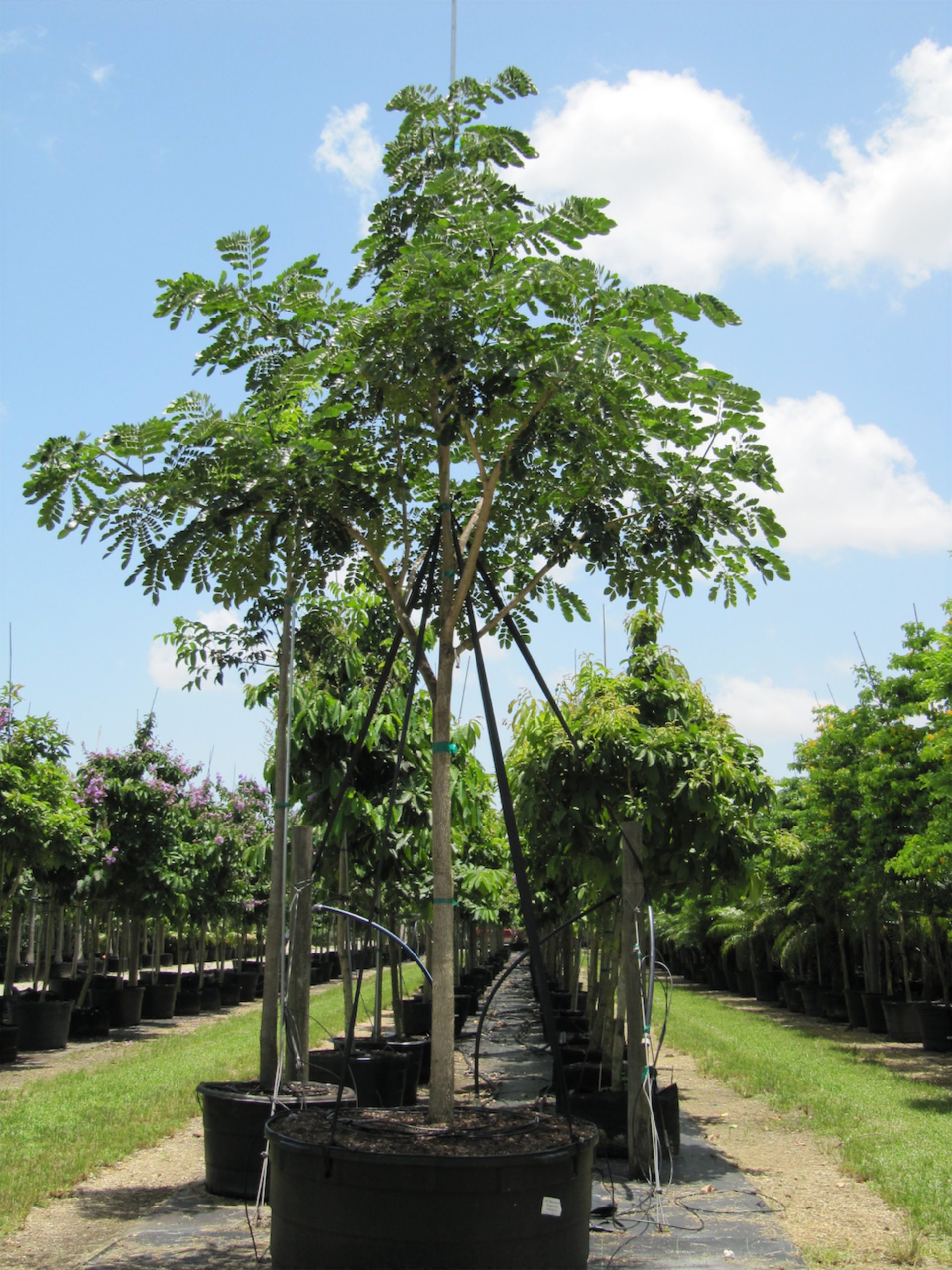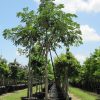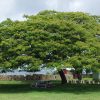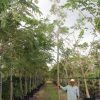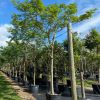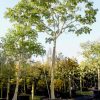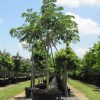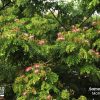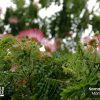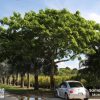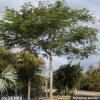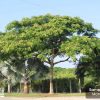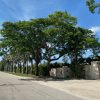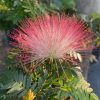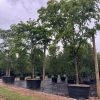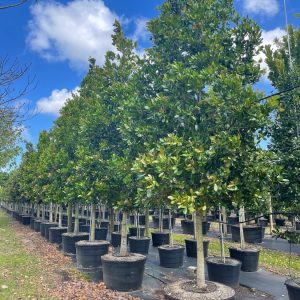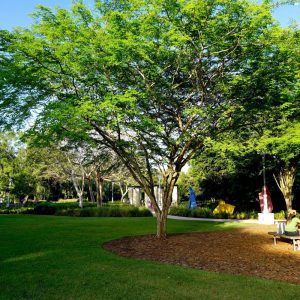Description
Samanea Saman Tree Description
The common name of the Samanea Saman (rain tree) should not be confused with an African tree (Philenoptera Violacea), also called rain tree. Samanea Saman rain tree is a large, semi-deciduous tree that grows to 100 feet in height. Additionally, it has a large, umbrella-like, symmetrical spreading crown, often as wide as the tree is tall. Moreover, it has gray, coarse, flaky bark. Large branches are prone to breaking in wind storms. Leaves are green, alternate, compound bipinnate, 10 to 16 inches long, with 1 1/2 inch leaflets; leaves fold up in the evening and on rainy days, hence the common name. Flowers are borne in pompom-like clusters near branch ends, with each cluster on a green, hairy stock 4 to 5 inches long; the showy pink blossoms have protruding white and pink stamens. Flowers are attractive to bees.
Furthermore, the hard, bean-like fruits are flattened and 8 inch long pods. The pods contain 15 to 20 reddish-brown seeds surrounded by a sweet, sticky edible pulp. Additionally, the seeds are used for propagation. The pods are often used as livestock feed and the wood to make furniture and carved bowls.
Rain Tree Cultivation and Landscape Applications
Samanea saman (rain tree, also known as monkeypod tree) provides well-drained soils. It benefits from pruning to maintain shape. In landscaping, it is planted for its foliage and flowers, is a good specimen or accent tree in gardens or parks and as a street tree and in a xerophytic garden.
Other names: Regenbaum, Enterolobium saman, Lara, Monkeypod tree



